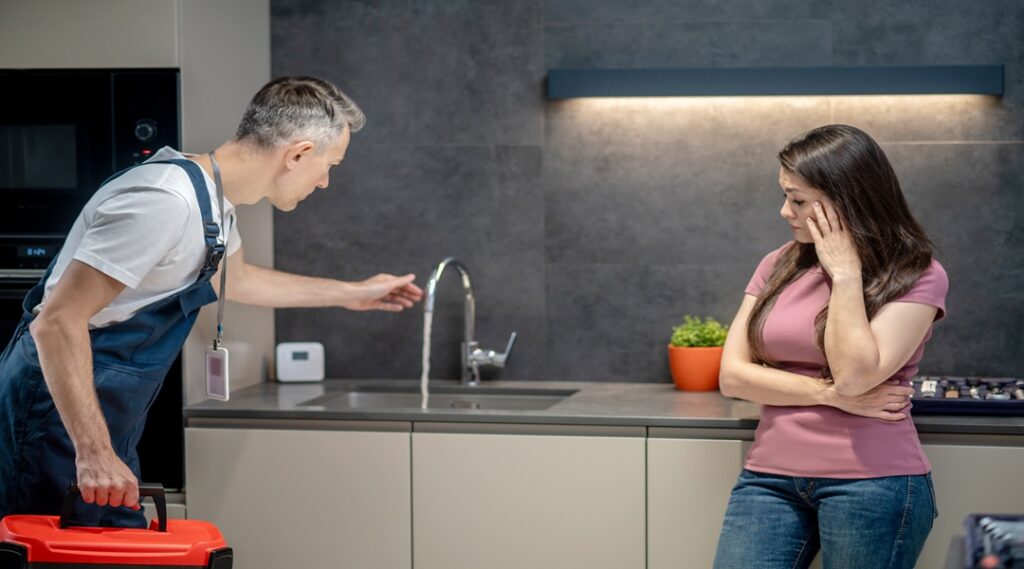How to Handle Water Pressure Issues in Your Home
Home /

Dealing with water pressure issues in your home requires careful attention to detail. Homeowners often find themselves perplexed by a sudden drop or spike in water flow. Discovering the root causes, such as common pressure problems, is the first step toward resolution.
One can adjust an existing pressure regulator if it’s not performing well or consider installing a booster pump for added force behind every faucet turn. Effectively managing these challenges not only ensures comfort but also preserves plumbing integrity. Now, let’s explore specific culprits that disrupt household water continuity.
A starting point is to check your residence’s main valve.
Identify Common Pressure Problems
Homeowners often overlook the main water valve, yet it’s vital for robust flow and pressure in your plumbing. For full force, ensure this valve is wide open. Water supply issues can stem from routine repairs or a broken pipe; these will diminish your home’s pressure.
Stay updated on local water provider alerts to anticipate changes. Leaks are deceptive villains. Small but damaging to system stability by draining precious water volume and dropping pressures sharply.
Inspect pipes diligently; fix leaks pronto! Clogs from mineral buildup thwart smooth circulation within lines―a cleanout is recommended. Lastly, consider how subzero spells stiffen pipes and jolt the equilibrium of your system: insulate them well!
Adding residential plumbing services assures optimal performance against such challenges.
Adjust the Pressure Regulator
To adjust a home’s water pressure regulator, first locate the device, often found where the main water line enters the house. It has a bell-shaped top and is connected to the pipe right after your main shut-off valve. Turn its screw or bolt clockwise using an adjustable wrench or pliers to increase pressure; counterclockwise will do just opposite.
It’s crucial to make these adjustments slowly while monitoring with a gauge attached nearby on spigot. Aiming typically for that 40-80 psi sweet spot most homes are set within by city utilities.
Remember though: high pressures can strain pipes so caution is advised when tweaking settings above standard ranges. Always ensure there aren’t any leaks in plumbing which could be falsely portraying as low-pressure issues before making alterations directly at PRV level.
Install a Water Booster Pump
When the water whispers rather than roars from your faucets and showers, a booster pump may be the solution. This device is designed to increase low water pressure in residential settings, ensuring that tasks like showering or gardening aren’t hindered by weak flow. The apparatus operates akin to a fan for liquids: its impellers spin rapidly, propelling the stream forcefully through pipes so you experience an invigorating cascade instead of only dribbles.
To install one correctly involves understanding various factors influencing pressure. Elevation affects gravity’s pull on moving fluids; pipe size determines capacity; distance consistently impacts force due to resistance encountered en route. For homes located higher up or further away from municipal supplies.
Or perhaps with plumbing less capacious. A well-chosen and properly positioned booster pump will dynamically elevate household hydrodynamics.
Experiencing low water pressure can be frustrating. Often, the cause is simple enough to fix at home. Like cleaning clogged aerators or replacing old showerheads.
For more challenging issues such as faulty pressure regulators or corroded pipes, it’s wise to seek a professional plumber’s help. Advantage Plumbing offers expert services that ensure homes enjoy strong and consistent water flow. Homeowners need not tolerate weak showers or trickling faucets with their reliable support just a call away.
Contact Our Team Today
Schedule a service appointment with Advantage Plumbing today by calling us. We look forward to hearing from you.





